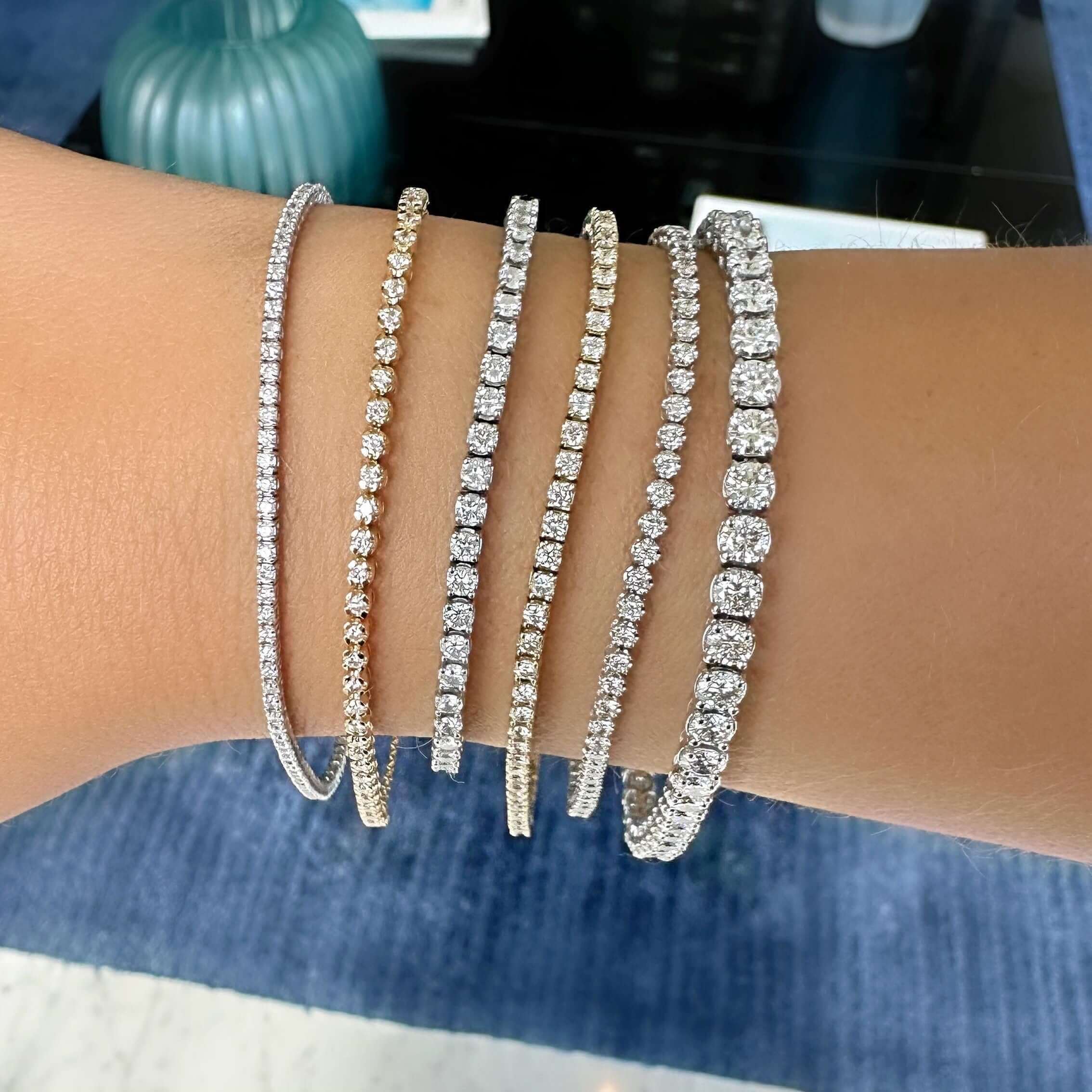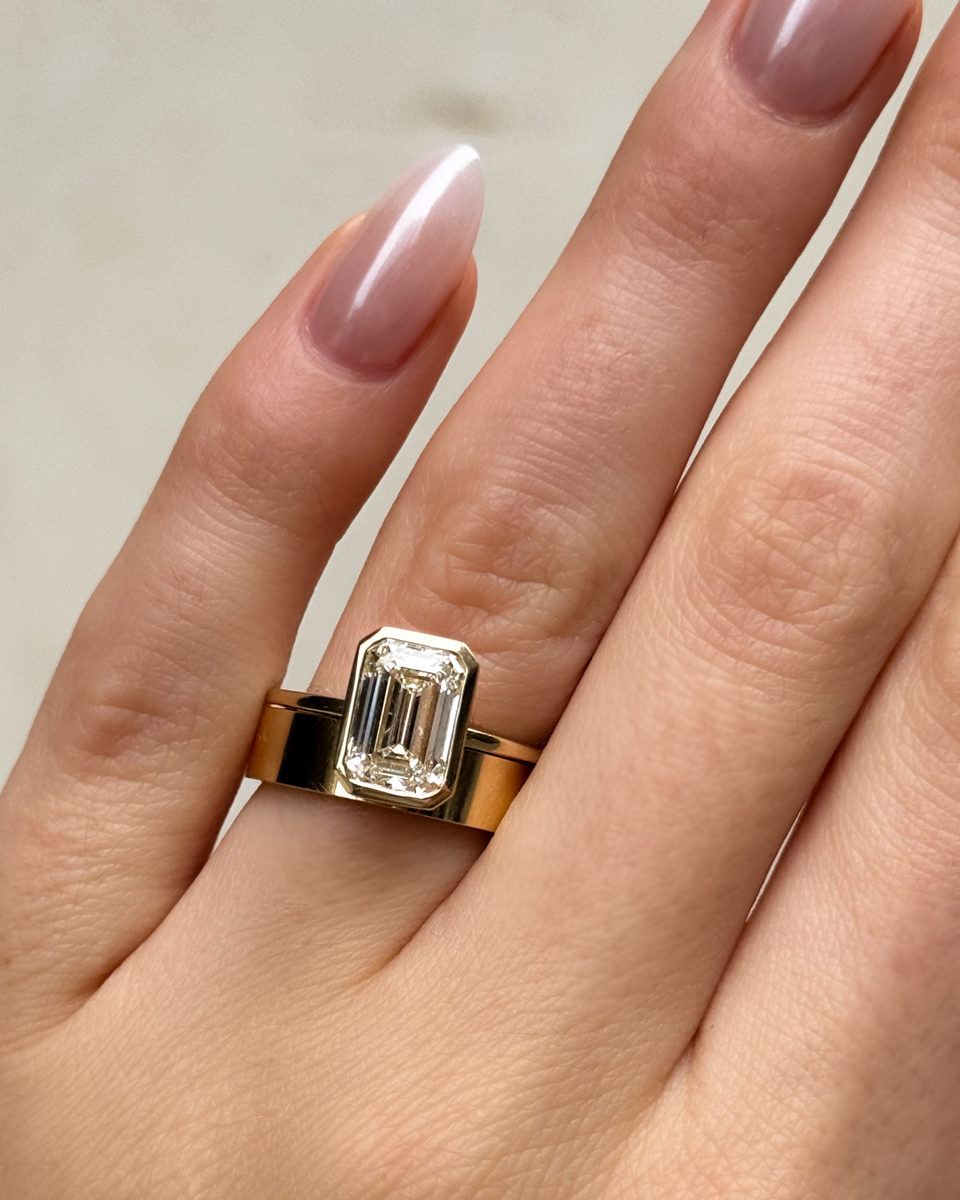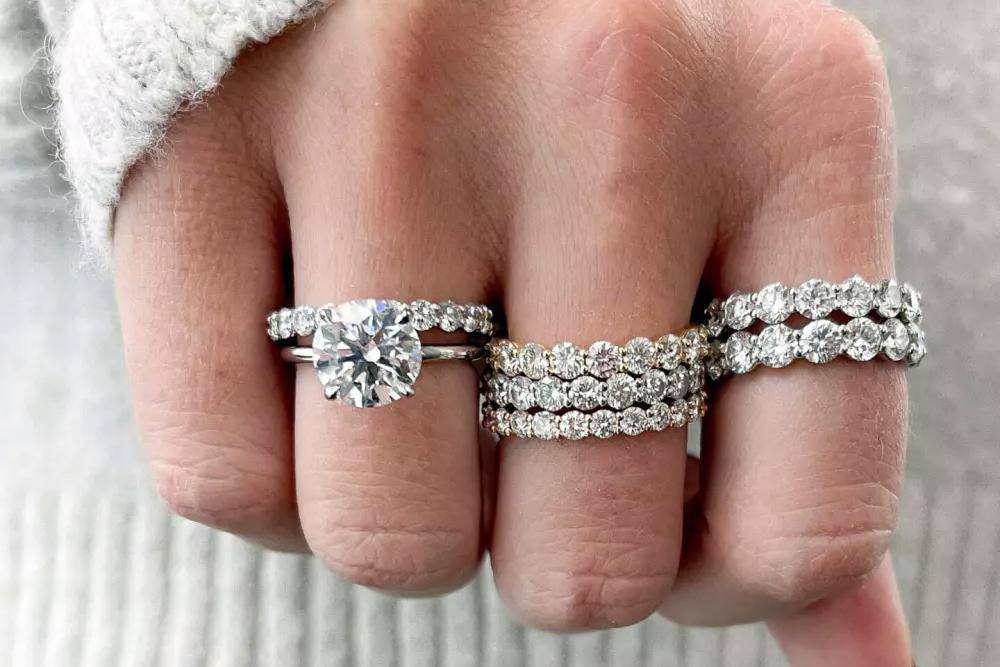Moissanite and lab diamonds are revolutionizing the jewelry world, and many people are wondering if it is worth exploring these alternatives instead of natural diamondsBoth options offer spectacular brilliance and an incredibly similar appearance to traditional diamonds, but at a much lower cost and reduced environmental impactAs these gemstones gain popularity, knowing their differences, advantages, and disadvantages becomes essentialIn this article, we are going to delve into the world of moissanite and lab diamonds, exploring their characteristics, how they are created, and how they compare to natural diamonds.
Moissanite: What Is It and Where Does It Come From?
Moissanite is a beautiful gem that closely resembles diamondIt was discovered by French scientist Henri Moissan in 1893, when he found small fragments in a meteorite in ArizonaAt first, Moissan thought he had found diamonds, but after further analysis, he realized that this stone had a different compositionMoissanite is silicon carbide, a material not found in large quantities in natureIts natural rarity is so extreme that, today, almost all moissanite used in jewelry is created in laboratories.
Moissanite is popular because of its stunning brilliance, which can even surpass that of a diamond in certain casesThis gem has a structure that allows light to refract in spectacular ways, creating a unique sparkle and fireBeing less expensive than diamonds, moissanite is an attractive option for those looking for a durable, great-looking gemstone without spending a fortuneAlthough it is not exactly a “diamond,” its beauty and durability make it a common choice in engagement rings and other fine jewelry pieces.
Another interesting characteristic of moissanite is its hardnessOn the Mohs hardness scale, which measures how scratch-resistant a stone is, moissanite is rated at 9.25, while diamond is rated at 10This means that while it is not as hard as a diamond, it is extremely durable and suitable for everyday wearThis combination of beauty, durability, and affordability makes moissanite an incredibly attractive alternative to traditional diamonds.
How Does Moissanite Compare to Natural Diamonds?
While moissanita que es and diamond look very similar to the naked eye, there are some important differences between the twoOne of the most distinctive aspects is the way they refract lightDiamonds have single refraction, meaning that light splits just once as it passes through the stoneIn contrast, moissanite has double refraction, which gives it an even more intense sparkle, with rainbow-like flashes that can be more apparent in certain lighting conditionsFor some people, this effect is dazzling and appealing; For others, it may appear too intense or artificial compared to the appearance of a diamond.
Another key difference is weightMoissanite is less dense than diamond, so a moissanite stone that is the same size as a diamond will weigh lessWhile this does not directly affect appearance, it does mean that jewelers can design specific settings to take advantage of this characteristicAlso, in terms of color, high-quality natural diamonds are generally colorless, while moissanite may have a slight yellow or gray tint, especially in larger sizesHowever, advances in moissanite creation technology have allowed for virtually colorless stones to be produced, making these differences minimal.
Cost is another important factorNatural diamonds are often significantly more expensive due to the complexity of their extraction and the limited supply in natureMoissanite, being made in laboratories, is much more accessible in terms of price, allowing buyers to purchase a large gem without having to spend an exorbitant amountFor many, this difference in price makes moissanite a more practical and affordable option for obtaining a stunning piece of jewelry without compromising their budget.
Lab Diamonds: What Are They and How Are They Made?
Lab diamonds, as the name suggests, are diamonds that are created in controlled environments within laboratoriesThese diamonds are identical in structure, appearance, and chemical composition to diamonds found in nature, meaning they have the same hardness, brilliance, and clarityThe only difference is the origin: while natural diamonds form over millions of years under extreme conditions deep inside the Earth, lab diamonds are created in a matter of weeks using advanced high-pressure, high-temperature (HPHT) or chemical vapor deposition (CVD) processes.
The HPHT process replicates the natural high-pressure and high-temperature conditions under which diamonds form, allowing carbon to crystallize into a diamond structureOn the other hand, the CVD method uses gases that are heated to create a “rain” of carbon atoms that are deposited on a surface, slowly forming a diamond structureBoth methods produce authentic diamonds that are impossible to distinguish from natural ones without specialized laboratory equipment.
If you’re looking for beautiful and unique diamonds, visit us at novitadiamonds.esClick the link to explore our collection and make your purchase today!
Lab-grown diamonds have several advantagesNot only are they cheaper than natural diamonds, but they are also a more ethical and environmentally friendly choiceMining natural diamonds often involves significant environmental impacts and is in some cases associated with serious social problems in regions where resources are mined under exploitative conditionsBy choosing a lab-grown diamond, buyers can be assured that their gemstone is sustainable and conflict-free, which adds special value to the piece of jewelry.
Comparison between Natural and Lab-grown Diamonds
Although lab-grown and natural diamonds are visually and chemically identical, there are some key differences in perception and the marketIn terms of quality, both types of diamonds can be graded based on the same standards: color, clarity, cut, and caratThis means that a high-quality lab-grown diamond can be just as visually impressive and valuable as a natural oneHowever, due to their origin, lab-grown diamonds are typically 20% to 40% cheaper than natural diamonds with similar characteristics.
Long-term value is another important aspectIn general, natural diamonds tend to retain their value better over time as they are considered rarer and more in-demandHowever, as consumers become more conscious of ethical and sustainable aspects, lab-grown diamonds are quickly gaining ground and their acceptance is growingFor those looking for a more affordable option without compromising quality, lab-grown diamonds can be an excellent choice.
On the other hand, buyers who value the rarity and “natural” origin of a lab made diamonds may lean toward an Earth-mined diamondHowever, with continued improvements in lab-grown diamond creation technology, many consumers no longer see a significant difference between the two optionsThis trend is transforming the jewelry market, making it more inclusive and accessible to those who want a stunning gem without the complexities of mining.
Which Is the Best Option for You?
Choosing between moissanite, lab-grown diamonds, and natural diamonds largely depends on your personal prioritiesIf you value brilliance and visual impact at an affordable price, moissanite may be your best choiceIt is a stone that, while not a diamond, offers a level of beauty and durability that meets the needs of many peopleAdditionally, moissanite has a special appeal for those looking for something unique and less conventional than a traditional diamond.
If you are looking for an authentic diamond but prefer a more ethical and economical option, a lab-grown diamond could be the perfect choiceWith its structure and brilliance identical to natural diamonds, this option provides a sustainable and modern alternative that is gaining popularity among young couples and conscious buyers.
Finally, if you want a diamond with long-term value and the history of having been formed naturally over millions of years, a natural diamond may be the best choice for youEach option has its own advantages, and the most important thing is to select a stone that aligns with your values, budget, and personal preferences.







